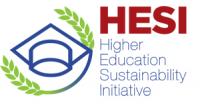Université de Perpignan Via Domitia
Description
For the DryRSP Project, the adopted approach is based on the use of the already existing solar field of the plant as macro heat exchanger. This offers a huge heat transfer surface area available 24h a day for heat transfer with the surrounding air (mix convection for cooling) and with the extra atmospheric space at 3 K (radiative transfer for sub-cooling). This approach offers a new functionality to the solar field which represents currently 50% of the investment cost of a solar power plant. During night, when the solar field is not under power operation, the cooling effect can be stored to be used daily or (under favorable climate conditions) to be used to produce fresh water by condensation of the surrounding air humidity. As far as ESCOFAR is concerned, the geo-chemical tracing of several glaciers plumes should help monitor the spread of this continental source inside of a fjord and assess the impact it has on the sedimentation along the fjord. Combining these data with the ecological study of benthic fauna of the fjord. In the framework of the HEAT ADAPT, the study of the regulation of gene expression in response to environmental signals is fundamental for understanding how plants grow and develop. Climate experts predict a temperature increase of 1.5 to 5.8 ° C by 2100 which could result in a decrease from 15% to 50% of crop yields. Because of the exceptionally hot summers of the last few years, plants have already suffered from extreme temperatures which, combined with other factors, have had a negative impact on the global agricultural production. It is therefore urgent to understand how climate change affects the plant life cycle to quickly adapt agriculture to future temperature increases. There is a scarce knowledge of the molecular mechanisms helping plants survive to stress. The use of the technology for the production of solar hot water within the class "Techniciens Installations Energies Renouvelables" is possible thanks to the adoption of an innovative system called Cumusol.Concerning the MINERVE programme, the data collected during these cruises will provide the basis for estimating the inter-annual variability and the mean variation (trend) of the net CO2 flux at the ocean-atmosphere interface. The observations collected during the MINERVE cruises are also used by other teams to limit atmospheric models and validate biogeochemical ones based on general ocean circulation models which try to simulate the ocean carbon cycle over the medium and the long term.
SDGS & Targets
Goal 13
Take urgent action to combat climate change and its impacts
13.1
Strengthen resilience and adaptive capacity to climate-related hazards and natural disasters in all countries
13.1.1
Number of deaths, missing persons and directly affected persons attributed to disasters per 100,000 population
13.1.2
Number of countries that adopt and implement national disaster risk reduction strategies in line with the Sendai Framework for Disaster Risk Reduction 2015–2030
13.1.3
Proportion of local governments that adopt and implement local disaster risk reduction strategies in line with national disaster risk reduction strategies
13.2
Integrate climate change measures into national policies, strategies and planning
13.2.1
Number of countries with nationally determined contributions, long-term strategies, national adaptation plans and adaptation communications, as reported to the secretariat of the United Nations Framework Convention on Climate Change
13.2.2
Total greenhouse gas emissions per year
13.3
Improve education, awareness-raising and human and institutional capacity on climate change mitigation, adaptation, impact reduction and early warning
13.3.1
Extent to which (i) global citizenship education and (ii) education for sustainable development are mainstreamed in (a) national education policies; (b) curricula; (c) teacher education; and (d) student assessment
13.a
Implement the commitment undertaken by developed-country parties to the United Nations Framework Convention on Climate Change to a goal of mobilizing jointly $100 billion annually by 2020 from all sources to address the needs of developing countries in the context of meaningful mitigation actions and transparency on implementation and fully operationalize the Green Climate Fund through its capitalization as soon as possible
13.a.1
Amounts provided and mobilized in United States dollars per year in relation to the continued existing collective mobilization goal of the $100 billion commitment through to 2025
13.b
Promote mechanisms for raising capacity for effective climate change-related planning and management in least developed countries and small island developing States, including focusing on women, youth and local and marginalized communities
13.b.1
Number of least developed countries and small island developing States with nationally determined contributions, long-term strategies, national adaptation plans and adaptation communications, as reported to the secretariat of the United Nations Framework Convention on Climate Change
SDG 14 targets covered
| Name | Description |
|---|
Deliverables & Timeline
Resources mobilized
Partnership Progress
Feedback
Action Network


Timeline
Entity
SDGs
Geographical coverage
More information
Countries

Contact Information
Py Xavier, Mr.
